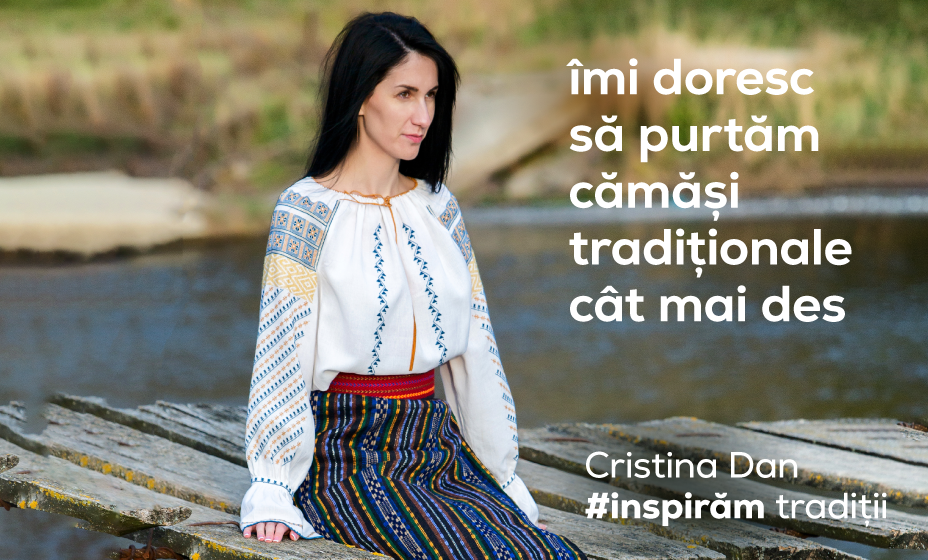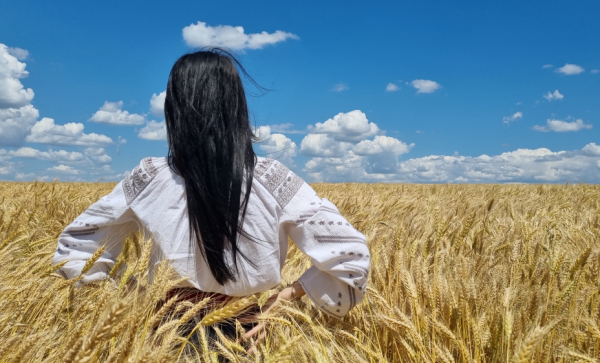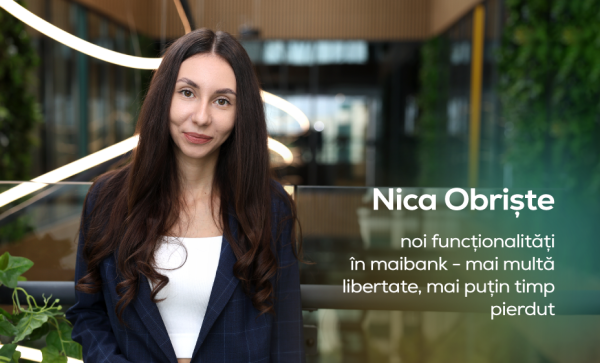The love for tradition, the preservation of ancestral customs and their transposition into modern clothing are just some of the elements that make our colleague Cristina Dan, Product Manager in the Utilities Department at maib, stand out.
Cristina is passionate about embroidery and is one of the founding members of the "Șezătoarea Basarabiei" association.
In this article, we invite you to discover the beauty of such a craft that, for some, seems to be forgotten in time, but not for Cristina.
Cristina, how did you discover your passion for the art of embroidery?
Embroidery became part of my life right after I gave birth to my son. With him grew my passion for embroidering shirts.
Do you have a favourite embroidery technique?
I have tried to practice different techniques over the 8 years I have been embroidering shirts. Initially, I would choose from the easier ones, and then with each shirt, I would realise I wanted something different and alternate them.
What's the piece of work you've worked hardest on? How long does it usually take you to sew an ”ia”? How about a ”cămașă cu altiță”? By the way, what's the difference between the two?
We call it a shirt, not ”ie”, because the latter is a more modern version used in some areas over time. It is correct to call it a shirt, ”cămașă cu altiță”, a straight shirt, or a men's shirt.
For me, each shirt becomes a unique creation, subjected to a meticulous process that takes an average of 9 months - a symbolic period equivalent to the time a mother carries her baby under her heart with love and care.
I even dedicated 15 months to making an extraordinary shirt. It comes from the heart of Bessarabia, the Edinet region, and is a unique piece, the shirt of a breastfeeding woman. This creation preserves the authenticity of local traditions, highlighted by the delicate crosses placed on the breasts, an ancestral sign of protection. The original of this marvellous garment can be admired at the National Museum of Ethnography and Natural History.
What are the most common motifs in traditional stitching? What about colours?
Among the motifs universally found on shirts, I mention:
- Star - the guide, the landmark;
- Tree of life - the link between heaven and earth, the symbol of continuous life;
- Rhombus - a symbol of fertility and well-being;
- Hands-on hips - a sign of feminine strength and determination;
- Spiral - a symbol of energy, universal movement;
- Cross - faith in God, a blessing.
Now, we have the luxury of choosing the colours we want, but in the past, colours were obtained by dyeing naturally with plants.
How did establishing the "Șezătoarea Basarabiei" community come about, and its purpose? How many members are in the community?
"Șezătoarea Basarabiei" was created out of the desire of a few women of different ages, different professions, with different temperaments to create a place where they can find each other, where they can connect, where they can share the thrill of fulfilment through the common passion of embroidering authentic shirts.
Initially, we were around 10 women, to become a team of over 30 in Chișinău and about 100 - in the country, who joined us through the project ACASĂ, LA ORIGINI that we initiated with the community. We also occasionally consult with craftswomen from outside the country through social networks.
We encourage traditional shirt enthusiasts to join us because we have a beautiful community that offers support with much love. And it's free.
Do you have any advice for those who want to start embroidering shirts?
In embroidery, boldness becomes a creative force because although the eyes may scare, the hands bring joy and frame stories.
Nothing can match the extraordinary feeling of a garment you have embroidered with passion and dedication. In its weave, it is there where you let your energy and thoughts weave into an artistic dance. There, you have hidden secrets, signs and symbols that will remain as deep and undeciphered as memories buried in every stitch.
How often do you come to the office in an ie or cămașă cu altiță ? Do you think these pieces should only be worn for special events, or are they suitable for everyday wear?
I usually do it on holidays, national holidays and more. And, I mean, they are eye-catching every time. The shirt can be festive and "business , but that's not what's important. It's how you feel when you wear it and what message you send to those around you. I wish we wore traditional shirts as often as possible because we can't be more beautiful and authentic than when we proudly wear our identity.
We hope this article will motivate you to wear the traditional shirt with pride more often, and we thank Cristina for inspiring maib people with her passion.









